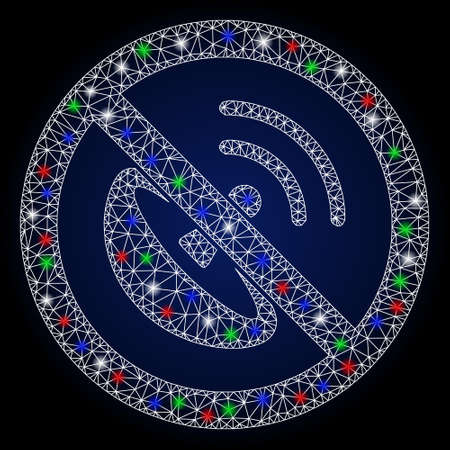Echoes of the Crystal Ball: Spiritual Practices in Historical Britain
Long before the modern world turned its gaze towards therapy rooms and counselling chairs, Britain’s landscape was alive with the whispers of seers, wise women, and cunning folk. The fog-laden moors and shadowy forests held secrets—stories passed through generations about those who could peer beyond the veil. In rural villages, it wasn’t uncommon for neighbours to seek guidance from a local fortune-teller, whose crystal ball shimmered with possibility, or from an herbalist versed in charms and remedies. These figures were not merely curiosities; they were trusted guides, woven into the very fabric of their communities.
British folklore is rich with tales of prophecy and second sight, echoing from Celtic druids to the mystical soothsayers who once found favour in royal courts. Queen Elizabeth I herself reportedly consulted astrologers and alchemists, seeking celestial counsel before momentous decisions. From the windswept Scottish Highlands—where tales of the “fey” and omens linger still—to bustling London streets alive with Romani fortune-tellers plying their trade, spiritual guidance has been both a comfort and a compass for countless souls navigating life’s uncertainties.
This tapestry of tradition reveals a culture deeply attuned to the unseen—the belief that wisdom could be drawn not just from books or bishops, but from stars, stones, dreams, and intuition. Even today, these echoes remain: superstitions tucked into everyday rituals, tarot cards shuffled at kitchen tables, legends retold around firesides. The British soul, it seems, has always yearned for answers—and found them in both the mystical and the mundane.
Tea Leaves and Tarot: Everyday Divination in British Life
Step into a classic British tearoom, and you may sense echoes of the past swirling in the steam above your cup. For centuries, everyday divination has quietly threaded itself through British culture, shaping not just private intuition but also community bonds. Among these mystical rituals, reading tea leaves—known as tasseography—and the artful shuffle of tarot cards stand out as enduring traditions.
The Ritual of Tea Leaves: A Social Oracle
Tasseography, the reading of patterns left by tea leaves at the bottom of a cup, blossomed in popularity during the Victorian era. It was far more than a parlour trick; it was a social ritual. Friends would gather for afternoon tea, sharing laughter, stories, and gentle predictions about romance, fortune, or fate. In this way, divination became woven into the fabric of daily life—a subtle blend of comfort and curiosity, perfectly suited to Britain’s love for both mystery and routine.
Tarot Cards: The Art of Storytelling
Meanwhile, tarot cards found their own place in British drawing rooms and fairs. Imported from Europe in the 18th century and gaining momentum among spiritualist circles by the 20th century, tarot quickly became a tool for self-reflection and storytelling. Readings often centred around common British concerns—weathering uncertainty, seeking guidance on matters of heart and home, or simply finding reassurance in changing times. Tarot readers were as likely to be found at local fêtes as they were in grand city parlours, bridging classes and generations through archetypal imagery.
Comparing Traditions: Tasseography vs Tarot
| Divination Method | Setting | Main Symbolism | Cultural Role |
|---|---|---|---|
| Tea Leaf Reading (Tasseography) | Home or tearoom | Shapes and patterns formed by leaves | Social bonding; accessible to all |
| Tarot Cards | Private readings or public fairs | Archetypal images and suits | Self-discovery; personal insight |
This everyday magic—sipped between biscuits or laid out on tartan cloth—has helped generations navigate uncertainties with a sense of wonder. Whether seeking playful glimpses into the future or forging deeper connections with others, these rituals remain living threads within the evolving tapestry of British spiritual guidance.
![]()
3. From Mediums to Modernity: The Rise and Decline of Spiritual Movements
The late 19th and early 20th centuries in Britain were marked by a fascination with spiritualism, as parlours from Manchester to Mayfair became stages for mediums, table-rapping, and the mysterious glow of crystal balls. Victorian society, ever curious and seeking comfort beyond the material world, embraced séances as both spectacle and solace—where messages from the “other side” mingled with candlelit whispers and the rustle of silk skirts. This era saw not only fortune-tellers but also respected intellectuals drawn into the mystical fold, blurring lines between entertainment and earnest belief.
Yet as the decades turned, so too did public sentiment. Scientific advances and the rise of rational inquiry began to cast long shadows over mediumship’s more flamboyant claims. Exposés—like those famously led by Harry Houdini—pulled back the velvet curtain on fraudulent practices, sowing seeds of scepticism that took root in British cultural consciousness. The shift was subtle yet profound: séances gradually gave way to drawing-room debates about psychology, suggestion, and the subconscious mind.
By mid-century, what was once a mainstream parlour pastime had become a niche pursuit—retained in folklore, echoed through stories of haunted country manors, but largely viewed through a lens of critical detachment. Still, echoes lingered. While outright belief waned, many Britons retained a quiet curiosity about what might lie beyond tangible reality—a reflection of the nation’s enduring openness to wonder, even as it embraced modernity. Thus, spiritual guidance in Britain evolved: moving away from dramatic displays towards introspection and dialogue, setting the stage for contemporary approaches rooted in both scepticism and subtle intuition.
Guidance in a New Light: The Emergence of Counselling and Therapy
As British society moved through the 20th century, a subtle yet profound shift occurred in how people sought guidance. The era of fortune tellers, crystal balls, and whispered prophecies began to fade into the background, making space for a new approach—one rooted not in mystical visions, but in the language of psychology, empathy, and well-being. This transition was not just about swapping tarot cards for therapy rooms; it was about redefining the very nature of spiritual support.
The Rise of Professional Counselling
With the advent of mental health awareness and the growing understanding of human psychology, counselling emerged as a reputable and accessible form of guidance. No longer shrouded in secrecy or suspicion, seeking help became not only accepted but encouraged. The UK saw a blossoming of therapeutic practices—from classic talking therapies to more holistic approaches—each offering their own lens through which individuals could explore life’s challenges.
The Shift in Language and Attitudes
This new era brought with it a fresh vocabulary. Terms like “well-being,” “emotional resilience,” and “self-care” entered everyday conversation, gradually replacing notions of curses or fate with concepts grounded in self-awareness and personal growth. The stigma that once clung to those who sought help began to dissipate, replaced by an ethos that valued openness and vulnerability.
Comparing Mystical Guidance and Modern Therapy
| Aspect | Mystical Guidance | Counselling & Therapy |
|---|---|---|
| Approach | Intuitive, symbolic, often spiritual | Evidence-based, structured, psychological |
| Setting | Private parlours, fairs, spiritualist churches | Clinics, community centres, online platforms |
| Language Used | Prophecy, destiny, aura | Mental health, coping strategies, trauma-informed |
| Cultural Perception | Mysterious, sometimes taboo or sceptically viewed | Increasingly mainstream and destigmatised |
| Main Goal | Insight into future or hidden truths | Emotional support and personal development |
A New Kind of Guidance for a Changing World
This transformation did not mean abandoning the spiritual altogether; rather, it reflected an evolution—British culture learning to blend ancient intuition with modern understanding. Today’s therapists might not read your palm, but they will listen with deep presence. In this way, the journey from crystal balls to counselling is less about dismissal and more about integration: honouring the wisdom of the past while embracing the healing power of contemporary practice.
5. Blending Old Wisdom with New Science: Contemporary Spiritual Guidance
In the shifting tapestry of British spiritual life, the present era is marked by an inspired fusion: ancient wisdom meets modern science in a dance that feels both familiar and refreshingly new. Walk into any high street in London or Manchester, and you’ll likely find a yoga studio beside a traditional church, a mindfulness centre above a vintage bookshop, or perhaps a holistic therapist advertising reiki and CBT (Cognitive Behavioural Therapy) side by side. This is no accident—it reflects the UK’s growing appetite for approaches that honour heritage while embracing innovation.
The Allure of Holistic Practices
British seekers today are not content with just one answer to life’s great questions. Instead, they weave together the old and the new—turning to crystal healing sessions before work, attending mindfulness workshops at lunch, and booking in for integrative therapies at the weekend. The resurgence of interest in herbal medicine, meditation, and even tarot readings finds its place comfortably alongside evidence-based practices like psychotherapy and coaching. It’s as though the mystical echoes of Glastonbury Tor have found common ground with Oxford’s scientific rigour.
Mindfulness: An East-Meets-West Success Story
Nowhere is this synthesis more apparent than in the British embrace of mindfulness. Once viewed as an exotic import from Buddhist tradition, mindfulness has been studied extensively by UK universities and recommended by the NHS for mental health support. In schools, offices, and even Parliament, guided meditations are demystifying spirituality—making it practical, accessible, and distinctly British in its understated approach.
Integrative Therapies: Bridging Tradition and Innovation
The contemporary spiritual guide—whether they call themselves a counsellor, healer, or coach—often draws on multiple modalities. It’s not unusual to encounter a practitioner who combines Jungian psychology with shamanic journeying or a GP who suggests acupuncture alongside medication. British clients appreciate this nuanced approach; after all, it echoes their national tendency to value both reason and imagination. In this landscape, spiritual guidance becomes less about predicting the future (as with crystal balls of old) and more about empowering individuals to navigate life’s uncertainties with resilience and insight.
This blending of old wisdom and new science is shaping a uniquely British model of spiritual care—one that acknowledges our need for meaning while grounding us in practical support. As we look around at today’s Britain—from bustling cities to quiet villages—the spirit of integration is unmistakable: honouring roots yet always reaching forward.
Stories from the Heart: Personal Journeys and Community Reflections
Across Britain, spiritual guidance is no longer a solitary affair tucked away in shadowy corners or whispered over tea leaves. It has blossomed into a tapestry woven with countless personal stories—each unique, yet deeply interconnected. Modern British voices, young and old, urban and rural, share a common yearning: to find meaning, reassurance, and belonging in an ever-shifting world.
Some find their roots by embracing ancestral wisdom—tales from grandmothers about dreams and omens, or local folklore carried on Cornish winds. Others seek clarity through professional support, engaging with counsellors who blend traditional talk therapy with mindfulness or holistic practices. These encounters offer space to untangle inner knots and rediscover hope.
But perhaps most profoundly, many are forging their own paths. From meditation circles in bustling London boroughs to quiet moments of reflection on the Scottish moors, people are tuning inwards, trusting intuition as much as insight. In this journey, community becomes both mirror and anchor—a place where experiences are shared without judgement, and diverse beliefs mingle harmoniously.
What unites these journeys is not the method but the heart behind them. Whether through tarot readings in Brighton cafés, yoga classes in Manchester town halls, or open-hearted conversations between friends under starlit skies, the modern British spirit of guidance is one of openness and connection. It honours the past while bravely embracing new ways of seeking wisdom.
As we listen to these stories—each a thread in our collective narrative—we remember that spiritual guidance in Britain is not just about answers. It’s about finding comfort in questions, strength in community, and wonder in the unfolding journey.


